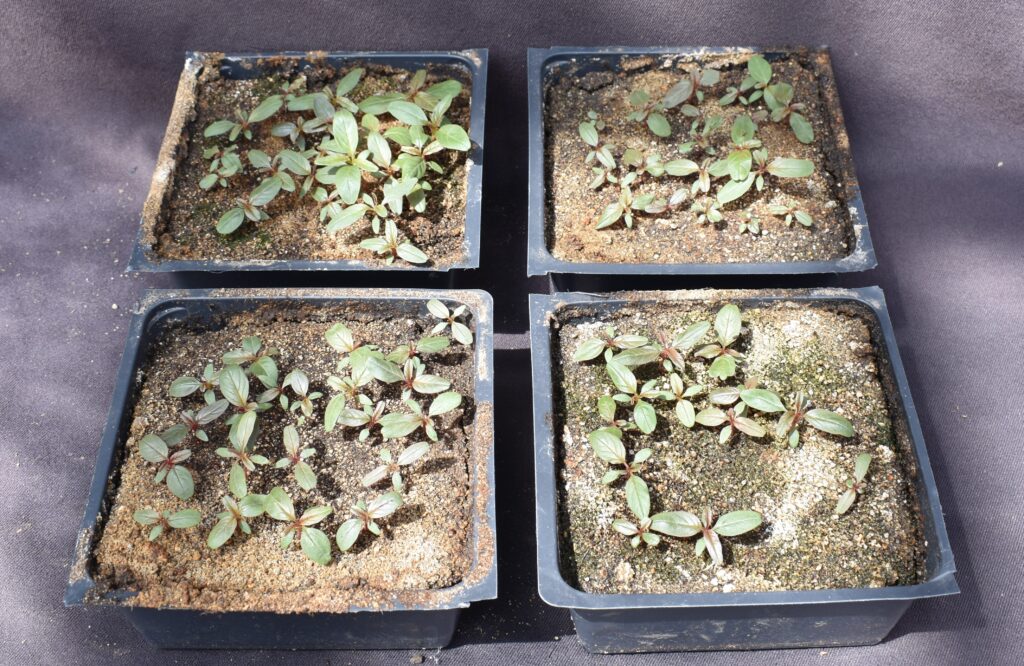Travis Wilke, Graduate Research Assistant at University of Illinois studying under Dr. Aaron Hager, recently provided an update on their Illinois Soybean Association-funded research project to document Illinois waterhemp populations' resistance to Group 15 herbicides. Read more below.
This spring, seed from nineteen females, each representing a different population from last fall's collections, was planted and sprayed with a discriminating dose. The seed was analyzed ten days after planting based on survival percentage and overall growth compared to an untreated control. A new discriminating dose of the Group 15 herbicide was developed through testing multiple doses on five populations in question to strengthen the criteria for passing the screening. Finally, the misting station used for residual herbicide incorporation was expanded to allow for more populations to be tested at once.
The plan for this summer is to screen collections against the new discriminating dose to decide which populations will be included in the dose-response survey. This will continue through the summer with the expanded misting station that has the potential to test up to fifteen populations per week. The screening will include each of the populations collected last fall.
Through trial and error in the greenhouse, I am very close to developing a standardized procedure that will allow for more residual herbicide research. This would lead to resistance screenings not previously done on a large scale. Variables are being identified that would allow us to manipulate not only the weed population, but also the herbicide and soil used.
Stay tuned to ILSoyAdvisor.com this winter for results from this project.

Developing a discriminating dose: This population would have passed the screening at the previous dose. Ranging from an untreated control to 1 pint of Dual II Magnum/Acre on the right, the middle two repetitions sprayed at 1/2 pint of Dual II Magnum/Acre indicated I could increase the former discriminating dose shown in the next picture. (PHOTO – T. WILKE, UNIVERSITY OF ILLINOIS)

Previous Screening: This photo of the same population shows the previously used discriminating dose that was slightly higher than 1/5 pint of Dual II Magnum/Acre (two treated repetitions on the right). This rate would allow too many of our collections to pass the screening, making a dose response survey unreasonable. (PHOTO – T.WILKE, UNIVERSITY OF ILLINOIS)


 and then
and then